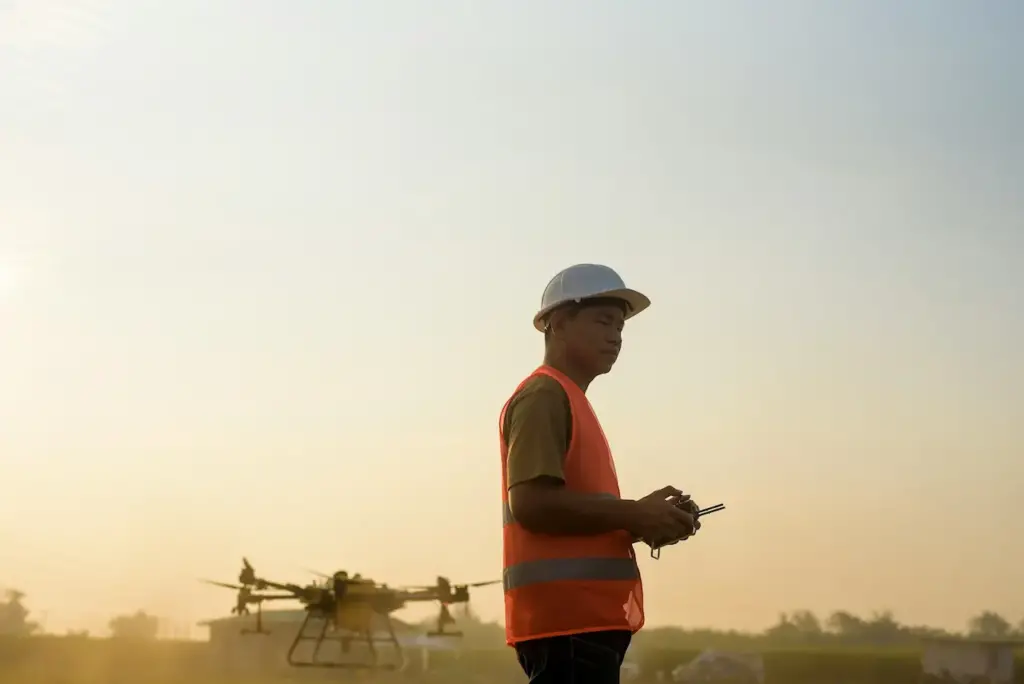Drones could save your construction business a ton of money and time, and even boost your reputation & trust.
The commercial drone market is yet in its nascent stages since the Federal Aviation Administration just approved quadcopters for business uses last year. But, it is predicted to be a huge success, and the construction industry would do well to sit up and take notice.
By 2020, Goldman Sachs Research predicts that the market for drones will be $100 billion, with the fastest growth opportunities in the business sector; construction, in particular. That’s because of how helpful these flying robots can be.

Savings
PwC estimates that the construction industry could save as much as $127.3 billion. Drones are cheaper than paying for a human surveyor, and can collect data faster and more accurately. The right software on a quadcopter can use sensor data to create 3-D models, make topographical maps, and measure volume.
All that information leads to more efficient job sites. It can help minimize problems, trim costs, and limit delays. Plus, you can see how your laborers are spending their time and if any equipment appears to go missing.
Planning
You can remove some of the time-consuming and complicated tasks involved in the planning stages of a construction site with a drone. It can scout a site from a bird’s-eye view. You can then use that data to build incredibly accurate maps and get official survey results that would otherwise have taken time, human resources, heavy machinery, and expensive tools.
Some drones are armed with 3-D laser scanners to get high-quality images. The data can be beamed directly to a faraway server where individuals can get access right away.
Better Safety Standards
A usability assessment from Georgia Tech shows that being capable of scoping a job site with a drone can enhance the effectiveness of a manager of security by up to 50%. After all, if you can see from the video that a pillar is unstable, a worker is too precariously placed, or if the excavations should be more in-depth, you can take quick actions to fix that.
You can also set up a safety system with best practices, which will eventually lead to an excellent track record and, thus, a better reputation in the industry. Also, because you can send drones into unsafe conditions to inspect, you can prevent needing to send a person in. Those safety records can also lead to lower insurance premiums.
Show Clients Progress
Your client can’t always pop up at a job site when they want to see your progress. But with drone surveys, you monitor progress, safety standards, and employees from almost anywhere. Investors can get an up-close and personal live stream of the work, which helps them feel like a real stakeholder that’s in the loop.
However, you’ll want to invest in a drone with HD camera. Those videos can also do double duty later on as marketing and sales tools.
Which Drone to Get?
DJI Phantom 4 Pro
The DJI Phantom 4 Pro features a titanium alloy and magnesium alloy construction, which should take a bit of a beating on the job site. It comes with a 1-inch, 20-megapixel sensor camera that can shoot 4K video at 60 frames per second (FPS).
The on-board software includes a FlightAutonomy system with dual rear-vision sensors and infrared sensing that can see in five directions to avoid obstacles. It should last about 30 minutes on a charge, and it has a range of 4.3 miles. The controller comes with a built-in 5.5-inch display and should last 5 hours on a charge.
Yuneec Tornado H920
The Yuneec Tornado H920 is a multi-rotor drone for professional use. It features modular carbon-fiber construction, which makes it easy to transport. The landing gear retracts as the drone takes flight, which gives it a clear 360-degree field of vision. It can hold two cameras, and it has an integrated GPS module.
It offers auto-landing modes for newbies. The controller features a large 7-inch touchscreen, with a dedicated button for photography and videography. The battery lasts a little less than 30 minutes, but the smart charger it comes with can charge two batteries simultaneously to get you back off the ground faster.
3DR Solo Quadcopter
Autodesk and 3D Robotics’ teamed up to create a drone with construction companies specifically in mind. The Solo with Site Scan has the largest sensor on a drone under 5 pounds. It can pilot itself, geotag photos, process data in the cloud, measure volume, and create orthomosaic image files.
The company says the average flight can cover 40 acres on one charge. And you can combine logs from multiple trips to make one map. You may even control it via your iPhone or Android smartphone.







